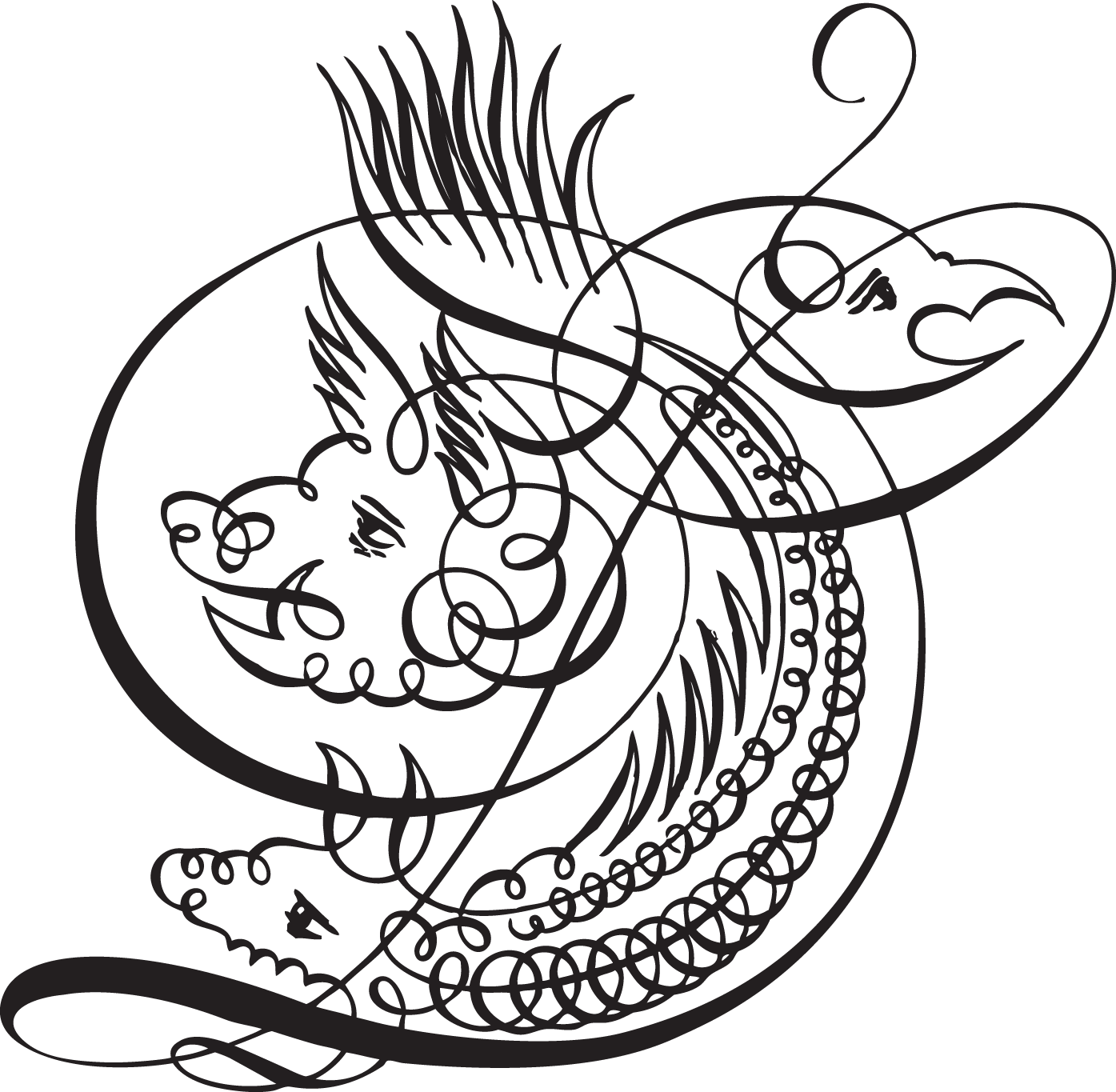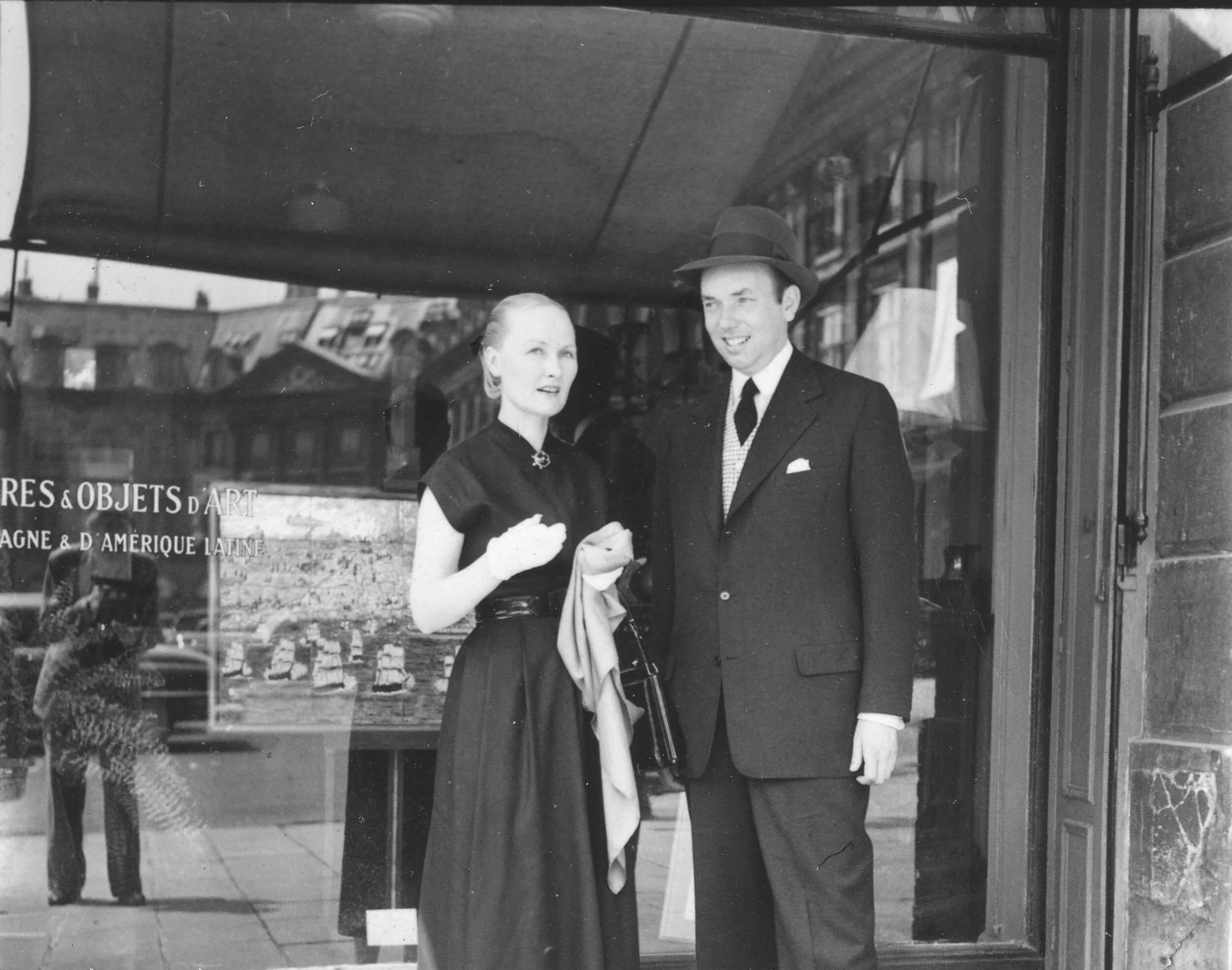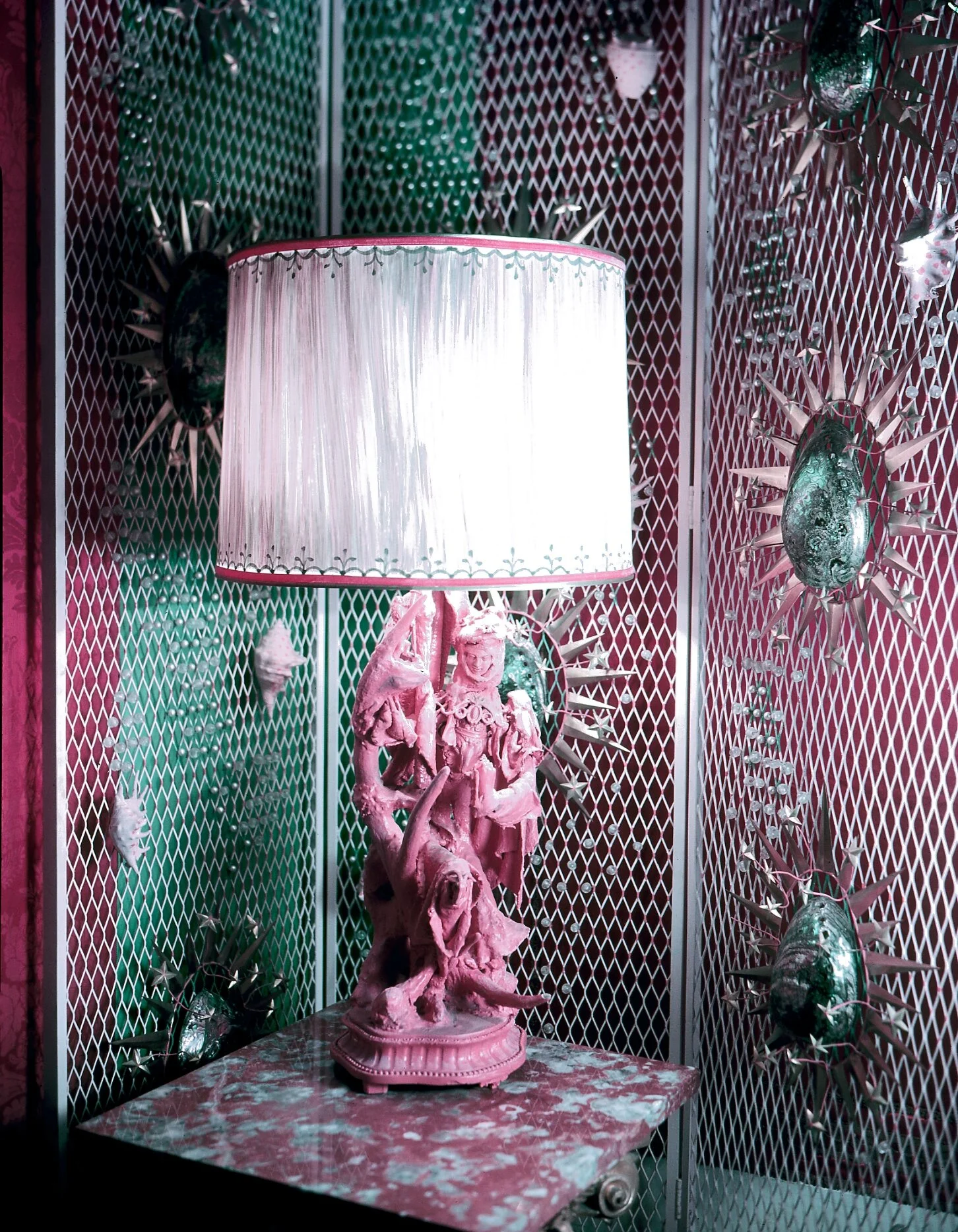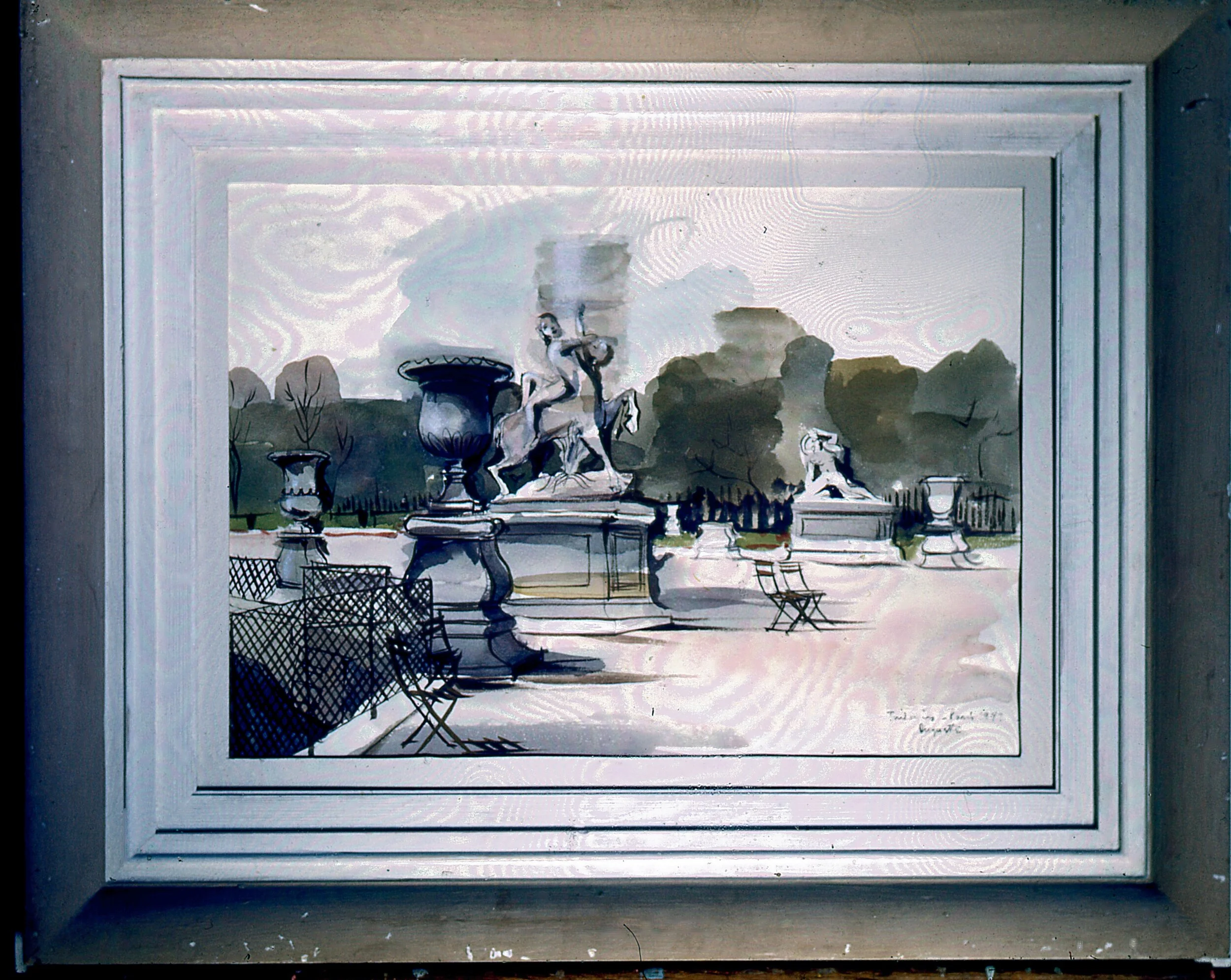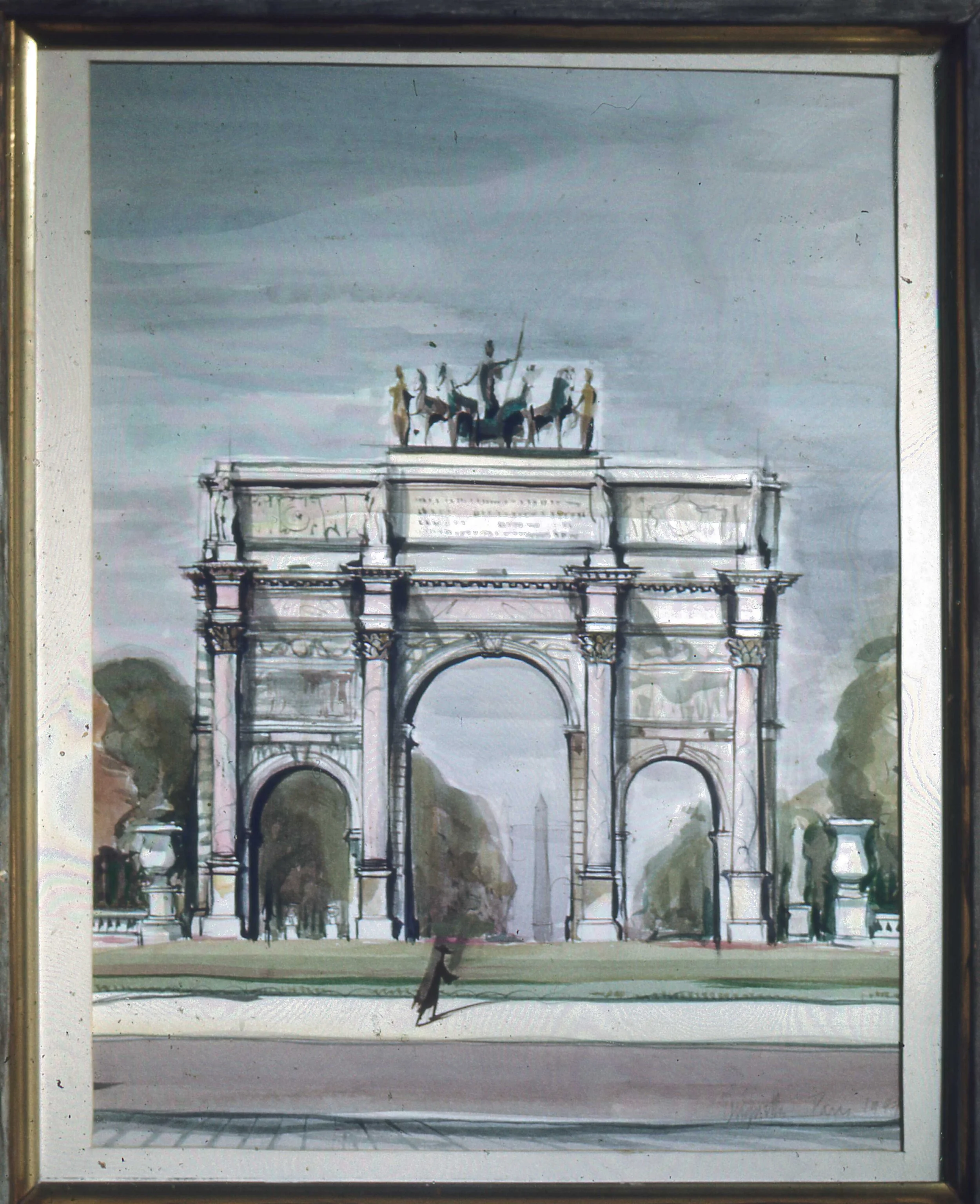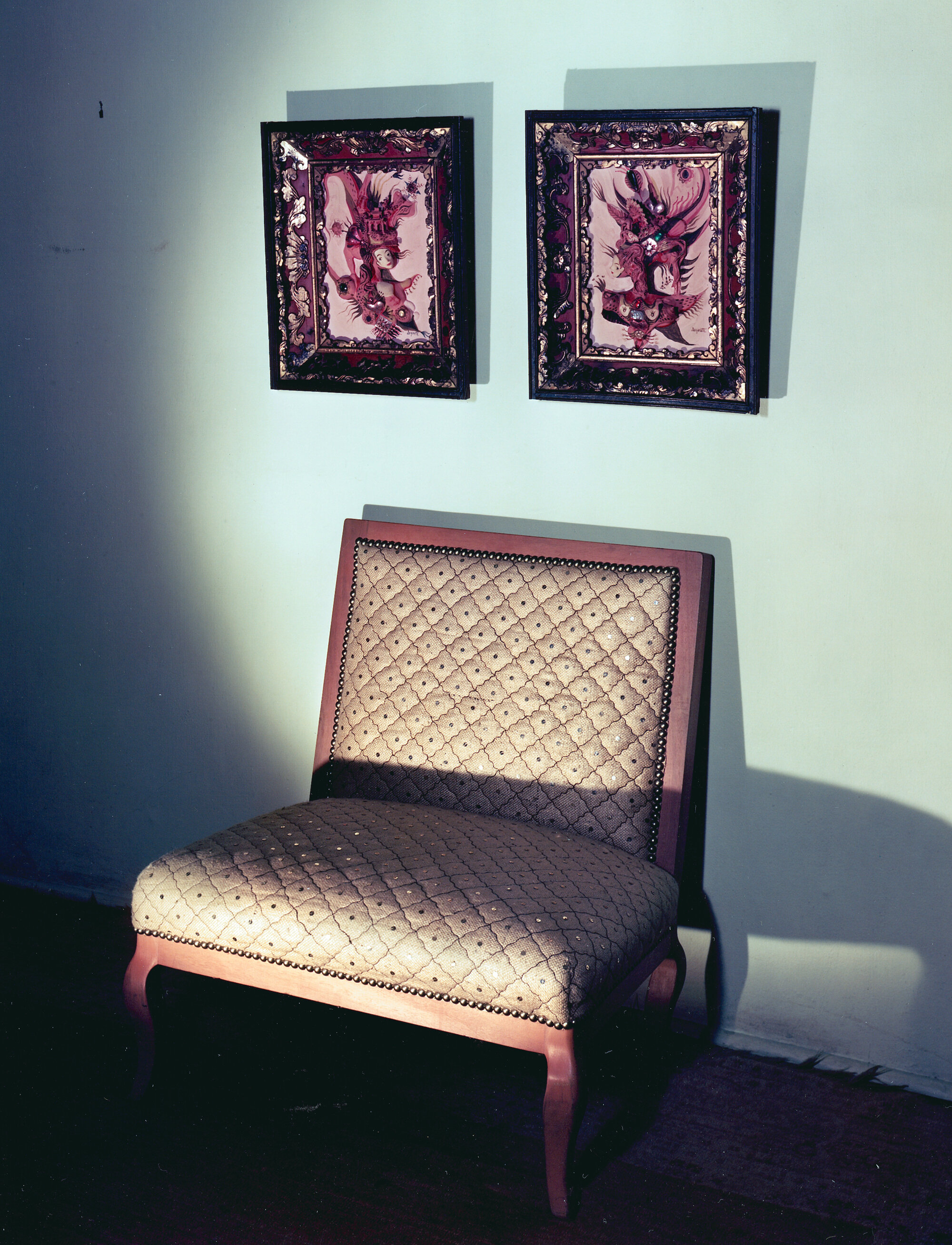Hutton Wilkinson * Tony Duquette Inc. is a full service interior design firm based in Beverly Hills with current projects in Los Angeles, New York, Palm Beach and Thailand with completed projects in Paris, Venice, Hawaii and Saudi Arabia.
Louvre Paris, 1951
Tony and Elizabeth (Beegle) Duquette taken on the street in Paris, circa 1951. Note: Beegle is wearing the turtle brooch which Tony designed for her.
A portrait of Tony Duquette outside the Pavilion de Marsan of the Louvre. Note: the poster mounted on the wall announcing his exhibition.
Tony Duquette watercolor depicting the house of one of his Rothchild friends. One of four water colors Duquette painted during his stay in Paris and later exhibited at the Louvre.
Contact sheets containing 24 images of Tony Duquette outside his exhibition.
The mueble with reverse painting on glass over sequined embroidered silk set in the panels. This desk was purchased by Cobina Wright for her home in Beverly Hills, California which Duquette decorated in 1953.
Tony Duquette’s three dimensional costume designs for an unrealized undersea ballet “The Engulfed Cathedral”, bas reliefs, jeweled figurines and watercolors as exhibited.
A Tony Duquette bas relief “La Chapeau” in plaster first exhibited at the Pavilion de Marsan of the Louvre Museum, Paris.
One of four images in watercolor by Tony Duquette during his stay in Paris c. 1950 and later exhibited at his unprecedented one man exhibition at the Louvre. The image depicts the arch at the Carrousel du Louvre seen through an iron fence.
Tony Duquette outside his exhibition at the Pavilion de Marsan of the Louvre Museum.
A corner of the Tony Duquette exhibition. Note: the iron mesh and abalone screens, the Duquette mueble in reverse painting on glass over sequined embroidered silk, the coral painted figural lamps and the slipper chairs in needlework, one upholstered to look like ermine tails and one to resemble the inside of a watermelon with its black seeds.
A figural lamp by Tony Duquette made of antlers, antique ormalu and coral painted gesso at the exhibition.
“The Lady and the Unicon” a wire and gesso figural group by Tony Duquette, the lady holding a ruby pendant as shown at the exhibition. This object was purchased by Tony’s patron in Paris, Commandant Paul Louis Weiller and used by him to decorate the drawing room of his house on the Rue de la Faisanderie, Paris.
A water color by Tony Duquette depicting the forecourt of the Chateau de Versailles. This painting was exhibited at his one man exhibition at the pavilion de Marsan of the Louvre. Duquette considered this work important enough to use as the invitation for the opening night celebration.
One of four images in watercolor by Tony Duquette during his stay in Paris c. 1950 and later exhibited at his unprecedented one man exhibition at the Louvre. The image depicts the Tuileries Gardens.
Tony Duquette watercolor depicting the arch at the Carrousel du Louvre, c. 1951. One of four water colors Duquette painted during his stay in Paris and later exhibited at the Louvre.
Tony Duquette placing the necklace he designed for the Duchess of Windsor around the neck of his iron mermaid sculpture, Paris c. 1951, in anticipation of his exhibition at the Pavilion de Marsan of the Louvre. The necklace was made of topaz, peridot and pearls set in a wreath of gold oak leaves.
A Tony Duquette mueble with plaster bas relief decoration depicting tropical scenes with palm trees, leopards and fanciful figures.
A “sequined” slipper chair by Tony Duquette shown with two painted plaster bas relief framed decorations at the exhibit.
